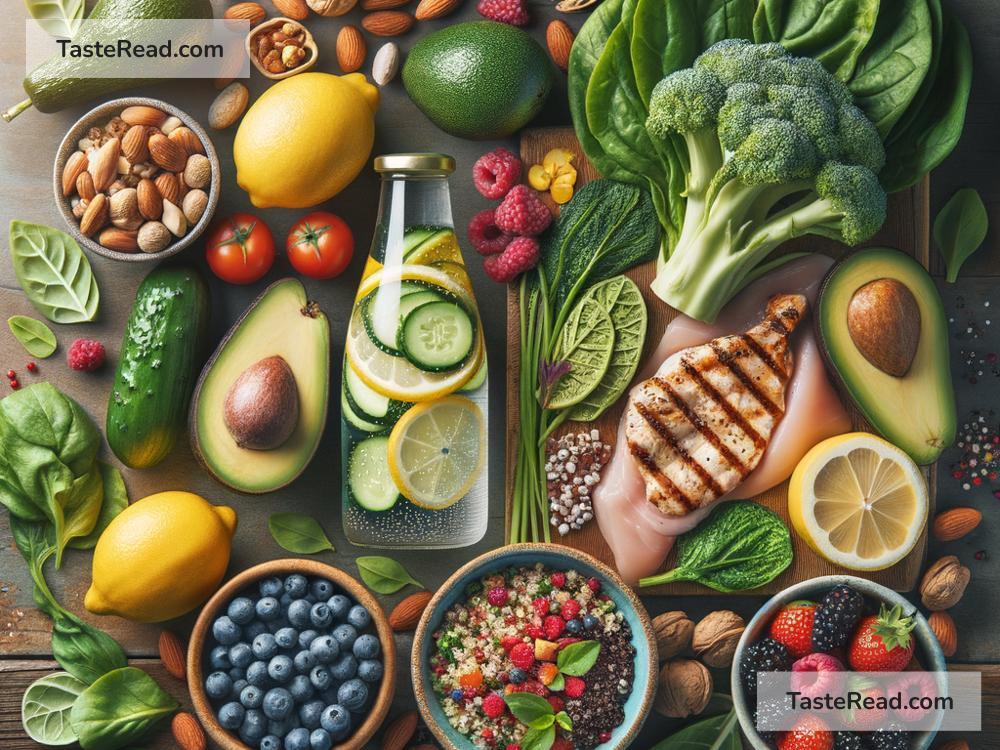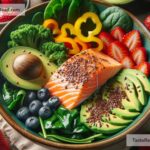Foods for Improving Weight Management: A Simple Guide to Eating Right
Managing your weight can be challenging, especially when there’s so much conflicting advice out there. But the truth is, weight management doesn’t have to be complicated. It starts with choosing the right foods that nourish your body, keep you full, and provide the energy you need to stay active. In this blog post, we’ll explore simple, healthy foods that can help you achieve your weight goals—whether you want to lose, maintain, or even gain weight healthily—using easy-to-understand tips.
Why Food Matters for Weight Management
Food is fuel for your body. The type and amount of food you eat have a big impact on your weight. Foods that offer little nutrition but are high in calories (like chips, cookies, and sodas) can throw off your weight-management efforts. On the other hand, eating balanced meals filled with healthy, whole foods can support steady energy levels, control hunger, and improve metabolism—all of which help manage your weight better.
Let’s dive into some of the best foods to include in your diet for effective weight management.
1. Fruits and Vegetables
Fruits and vegetables are your weight-management superstars. They’re low in calories but packed with vitamins, minerals, fiber, and water. Fiber is key because it helps you feel full, preventing overeating. For example:
- Leafy greens like spinach, kale, and lettuce are rich in nutrients and have very few calories. Use them in salads, smoothies, or as a side dish.
- High-water-content veggies such as cucumbers and zucchinis are hydrating, refreshing, and filling.
- Fruits like apples, oranges, and berries are great for satisfying sweet cravings without resorting to sugary snacks.
Tip: When you eat more fruits and vegetables, your plate looks fuller without adding extra calories. This helps control portion sizes and hunger.
2. Protein-Rich Foods
Protein is fantastic for building and repairing muscles, but it’s also important for weight management. Foods high in protein help you feel fuller, reduce cravings, and boost your metabolism. Consider these options:
- Eggs are versatile, affordable, and packed with protein. They make a great breakfast option to keep you full through the morning.
- Chicken and fish are lean proteins that work well for lunch or dinner. Fish like salmon also contains healthy fats!
- Beans and lentils are plant-based proteins loaded with fiber. They’re great for those looking to balance their weight while eating less meat.
- Greek yogurt is thick, delicious, and has more protein than regular yogurt. Opt for unsweetened varieties to avoid added sugars.
Tip: Balance protein with veggies in each meal to create a healthy, satisfying plate.
3. Whole Grains
Not all carbs are bad—the key is choosing complex carbohydrates like whole grains. Unlike refined carbs (white bread and sugary snacks), whole grains take longer to digest, giving you sustained energy and preventing blood sugar spikes. Examples include:
- Brown rice and quinoa are excellent side dishes that pair well with proteins and veggies.
- Oats make a filling breakfast that keeps you energized for hours. Add fruit or nuts for extra flavor.
- Whole-grain bread and pasta are better options than their refined counterparts, providing more nutrients and fiber.
Tip: Aim to replace refined grains in your diet with whole-grain products to support weight management.
4. Healthy Fats
Fats aren’t the enemy when they’re the right kind. Healthy fats help control hunger and keep your brain sharp. Adding these foods to your diet wisely can improve weight management:
- Avocados are creamy and satisfying, making them great additions to salads, toast, or smoothies.
- Nuts and seeds like almonds, walnuts, chia seeds, and flaxseeds are nutrient-rich snacks. Just watch portions since they’re high in calories.
- Olive oil is a healthy fat that can be used for cooking or as a salad dressing base.
- Fatty fish like salmon, mackerel, and sardines are excellent sources of omega-3 fatty acids, which support heart health too.
Tip: Keep portions in check—healthy fats are calorie-dense, so moderation is key.
5. Low-Calorie, High-Fiber Snacks
Healthy snacking can prevent hunger between meals and keep your metabolism steady. Choose snacks that are low in calories but high in fiber and nutrition:
- Popcorn (the air-popped kind!) is a light, whole-grain snack that satisfies crunch cravings.
- Veggie sticks (e.g., carrots, celery) with hummus or a light yogurt dip make a flavorful and filling snack.
- Fruit slices like apples paired with a small amount of nut butter create a delicious balance of sweetness and protein.
Tip: Plan your snacks in advance to avoid reaching for unhealthy junk food when hunger strikes.
Quick Tips for Eating Mindfully
Choosing the right foods is important, but how you eat also matters. Here are a few simple tips:
– Eat slowly: This gives your brain time to register fullness and prevents overeating.
– Stay hydrated: Sometimes dehydration feels like hunger. Drink water throughout the day.
– Avoid distractions: Focus on your food while eating—don’t watch TV or scroll on your phone.
Conclusion
Weight management doesn’t mean starving yourself or giving up the foods you love. It’s about making smart food choices that nourish your body and keep you satisfied. Incorporating more fruits, vegetables, proteins, whole grains, and healthy fats into your meals—and eating mindfully—can make a huge difference.
Remember, consistency is key. Start small by adding one or two of these food groups to your daily meals, and you’ll be well on your way to a healthier lifestyle. It’s not about perfection—it’s about progress. Simple, healthy eating can help you manage your weight and feel your best.


